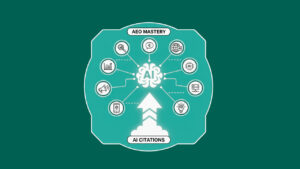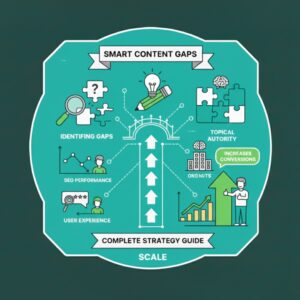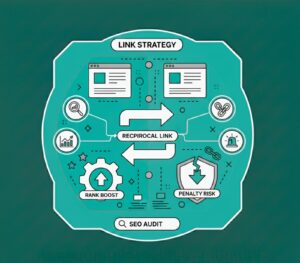Mastering On-Page SEO: 13 Key Elements for Higher Rankings
Blogs | SEO
Written By: Lauren Davison
Introduction
Picture this: someone builds a shop on the busiest street in town, but doesn’t put up a sign outside that is easy to see. People pass by it all the time without recognising it. When websites fail to prioritise On-Page SEO, this is what happens. Your site might offer wonderful items or ideas, but if search engines can’t read it, people won’t be able to find it.
More than 90% of all internet sessions begin with a search engine like Google. This means that if you don’t do on-page SEO, you might not be able to find yourself online. The good news is you can take control of this. Do you want to know how to make your website easy to find, read, and use? Let’s look at 13 things that can help your website stand out and move up in search results.
Table of Contents
Understanding On-Page SEO
Think of search engines as giant directories. They need to know where to place each website. On-Page SEO is the set of actions you take on your webpages to help with that process. It’s about telling search engines, “This is what my page covers and why it matters.”
This is different from off-page SEO, which focuses on backlinks, word-of-mouth, and reputation. On-page SEO is more like tidying your shop before letting visitors enter.
When you get the basics right, site visitors understand you faster. Search bots crawl better. And people don’t quit after landing on your page.
Why On-Page SEO Impacts Rankings
- Helps search engines know if your content answers users’ questions.
- Allows crawlers to read your pages without confusion.
- Makes users stay longer, lowering bounce rates.
Semrush highlighted that Google handles almost 9.5 million searches per minute. Most of the time, people click on the first few results. If you don’t do appropriate on-page SEO, your chances of being there are limited.
E-E-A-T: Experience, Expertise, Authoritativeness, Trustworthiness
What factors does Google value and prefer one page over another when both seem similar? E-E-A-T is the answer. These four signals of Experience, Expertise, Authoritativeness, and Trustworthiness serve as a credibility test.
When your website isn’t signalling that you’re knowledgeable in your field, you risk losing both search engine and reader trust. Building these signals allows you to differentiate yourself and stay in compliance with SEO best practices.
Applying E-E-A-T to Content
- Highlight author bios and credentials. For example, mention if the writer has real-life experience.
- Cite reliable data sources like government sites or respected research firms.
- Avoid vague claims; show facts that back up your ideas.
- Share practical knowledge. Real experience has strong value to both users and search engines.
Marketers believe showing industry authority is now crucial for ranking. This shows E-E-A-T is no longer optional. It’s part of building visibility.
Optimising Title Tags and Meta Descriptions
Your page title and description are like store windows in a busy market. People generally notice them first when they search on Google. Users will just skip if you don’t make them inviting.
Optimising your meta tags makes your site easier to find and more appealing to users. It’s like a small commercial for your stuff.
Tips for Effective Title Tags
Slip in your main keyword naturally. Example: On-Page SEO Tips for Beginners.
Don’t go over 60 characters. Longer titles get cut off in search.
Make it direct and appealing, not dull. Encourage curiosity.
Optimising Meta Descriptions
- Use a second keyword.
- Make sure it’s clear and less than 160 characters.
- Make it sound like an invitation. Words like “learn how” or “discover more” make people want to click.
Structuring Your Content for SEO
Think about how hard it would be to read a book that didn’t include chapters, headings, or spaces. You wouldn’t last long. The same goes for SEO content structure. To help both people and machines, break up content into smaller pieces.
Using Headings Effectively
- Keep one H1 tag with the primary keyword.
- Use H2s and H3s for supporting points and secondary keywords.
- Write small paragraphs. Avoid bulky blocks of text.
A clean structure shows order, improves readability, and strengthens keyword signals. Readers get clarity, and search engines know the priority of each section.
URL Optimisation
A confusing URL equals a confusing store address. Visitors won’t remember it, and search engines won’t like it. SEO-friendly URLs are short, clear, and descriptive.
Example:
Bad: www.sitename.com/p=92345?id=48
Good: www.sitename.com/on-page-seo-guide
Clean URLs build trust. Users feel better clicking them. Google indexes them faster. A simple step, but it leaves a strong impact.
Internal and External Linking
Think of links as pathways. They guide search bots across your site and send signals about your topic. Without links, your site is like a map with no roads.
Internal Linking Best Practices
- Link pages with related content. Example: from a blog on headings to a guide on content writing.
- Use meaningful anchor text, not generic words like “click here.”
- Improve user flow. Links lead people deeper into your site instead of bouncing back to Google.
External Linking Tips
- Link only to respected sites. For instance, research studies from credible bodies.
- Show back claims with evidence. This boosts trust.
- Avoid linking to competitors or unverified sites.
Strong linking builds networks within your site and proves your knowledge to search engines.
Image Optimisation for SEO
Images say more than words, but they can also make your site load more slowly. Visitors leave sites which are slow. Image optimisation for SEO makes sure that images appear excellent without slowing down the site.
Steps you can take:
- Replace odd file names with descriptive ones like “seo-strategy-chart.jpg.”
- Add alt text to describe each image. This also helps screen readers for accessibility.
- Use compression so images don’t make pages heavy.
Google studies show most users will abandon a page that takes more than three seconds to load. Images play a big part in this.
Mobile-Friendliness and User Experience
People use their phones to browse the web these days. You may lose users right away if your site doesn’t work on mobile. SEO and user experience are very closely intertwined.
Key factors to consider:
- Use a responsive design that fits screens of all sizes.
- Buttons should be easy to tap without zooming.
- Text should remain sharp and readable on small devices.
Since 2020, Google has used mobile-first indexing. That means they look at your mobile version before your desktop site. If mobile experience fails, your SEO efforts will too.
Content Quality and Keyword Optimisation
Many people think that SEO is about stuffing keywords everywhere. In reality, writing that is full of jargon will bring you down. Search engines now give more weight to information that is valuable, unique, and easy to understand.
Focus on:
- Placing your primary keyword in natural spots like headings and intros.
- Mixing in secondary keywords smoothly, such as SEO best practices.
- Writing content that people understand easily. Avoid fluff.
The idea is balance. Keywords help search engines. Quality helps people. Both together pave the way to higher rankings.
Schema Markup and Rich Snippets
You may have seen reviews, event times, or star ratings right on a Google results page. These extras are called rich snippets. They show up because of schema markup, a type of structured code added to your site.
Why use it?
- It helps search engines understand your content better.
- Rich snippets grab attention in crowded search results.
- They can increase click rates because people see details faster.
Adding schema doesn’t guarantee rich results, but it improves your chances.
Page Speed Optimisation
Would you wait 10 seconds for a page to load? Most people wouldn’t. Slow sites kill user trust and rankings.
Research by Google found that when page load time increases from 1 to 3 seconds, bounce rates jump by 32%. At 5 seconds, they spike by 90%. That’s how serious speed is.
Ways to fix it:
- Compress images.
- Use website caching.
- Minimise unnecessary code and heavy scripts.
Fast pages mean happy users and stronger SEO scores.
Social Sharing Integration
Social media is where conversations spread. While shares aren’t a direct ranking factor, they boost visibility and get more eyes on your content.
Add social sharing options on blogs and guides. Use share buttons that don’t slow down the page. Write headlines that make people want to share because they are interesting and emotional.
You get additional backlinks, brand mentions, and natural trust as your material spreads.
Conclusion
You don’t get good ranks by accident. They come from using proven methods, testing your results, and improving step by step. You might think that on-page SEO is complicated, but you can learn it and control it. These 13 things make a strong framework for your site, from optimising titles and URLs to speeding up your site and improving user experience.
Keep in mind that SEO isn’t simply about making search engines happy. It’s important to make your site easy to read, quick to load, and useful for your visitors. When you put people first, the rankings will come automatically.
Midland Marketing helps businesses like yours develop online with easy-to-use digital marketing techniques that fit your needs. We’re here to help you get more people to your business, get more people to your website, and turn visitors into customers.
Contact us to get started on your own SEO plan.
Frequently Asked Questions (FAQs)
1. What is the main goal of On-Page SEO?
To help consumers and search engines understand your website better, which will help it rank higher and get more visits.
2. How do meta tags help with SEO?
They tell search engines what the page is about and make people want to click on search results.
3. Why work on internal linking strategies?
They keep visitors engaged and help Google crawl your site more effectively.
4. How does user experience affect SEO?
Bad design or slow loading drives users away. High bounce rates lower rankings.

Written by - Lauren Davison
Introducing Lauren – one of our content writers who has a flair for SEO and creative strategy!
With a Master’s Degree in Creative Writing, Lauren has niched down into SEO and content writing.
Outside of work, she loves watching the darts, reading and the pub on the weekend.
Want some more?
Latest Insights & News

Revolutionising Marketing: The Rise of Situational Content Strategies
Situational content strategies involve tailoring content to specific moments, contexts, or audience behaviours. By aligning content with real-time trends, seasonal needs, and user intent, brands can increase relevance, improve engagement, and strengthen SEO performance.

Smart Ways to Identify and Fill Content Gaps Fast: A Complete Strategy Guide
Content gaps refer to missing information, unanswered questions, or underserved topics in your existing content. Identifying these gaps helps you create targeted, high-value pages that improve search visibility, satisfy user intent, and outperform competitors.

Reciprocal Links in SEO: Do They Still Boost Rankings or Risk Penalties?
For the keyword “reciprocal links SEO,” focus on explaining how reciprocal linking works today. Reciprocal links are not harmful by default, but Google can flag excessive or manipulative link exchanges. To stay safe, only exchange links when they are contextually relevant, natural, and valuable to users.
